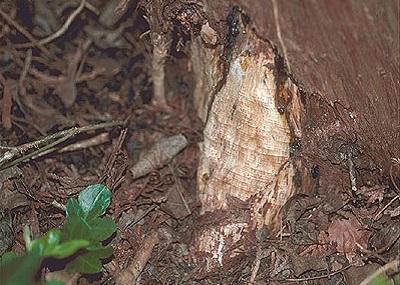
Photo: USDA-APHIS-WS
Voles, also known as meadow mice, are very plentiful in many landscapes. They are often confused with a mole. However, unlike the mole, they feed on plant material and spend more time above ground. There are actually two species in Maryland: the meadow vole and the pine vole. Voles are active day and night, year round. Their home range depends on population and food. It is usually a ¼ acre or less. Voles only live two to sixteen months. They may breed throughout the year, but mostly in spring and summer. Litter size ranges from one to eleven (average is three to six).
An elaborate surface runway system, one to two inches wide, with many burrows is an easily identifiable sign of voles. One problem associated with voles is that they eat plants and their roots. In addition, their runways and tunnels can also cause roots to dry out, creating problems for many shrubs. They are particularly harmful to the roots of boxwoods. Voles will also use mole tunnels to feed on plant roots. Voles may cause extensive damage to orchards and woody landscape plants in the winter when they girdle (or chew) the bark from the lower trunks.


in the winter when they girdle the bark from the lower trunks (arborvitae in photo)

General vole management
- Reduce vole activity by using snap-type mouse traps baited with apples placed in the surface runways or burrows.
- Eliminate weeds, groundcover, and litter in and around crops and cultivated areas to reduce the capacity of these areas to support voles.
- Do not pile mulch up against tree trunks or underneath shrubs.
- To protect tree trunks, place tree guards (18 inch high cylinders formed from hardware cloth) around trees which should extend 2-3 inches below the soil line.
- Lawns should also be mowed regularly.
- Place small piles of pea gravel around the base of fruit trees to prevent voles from girdling the lower trunk during the winter.
